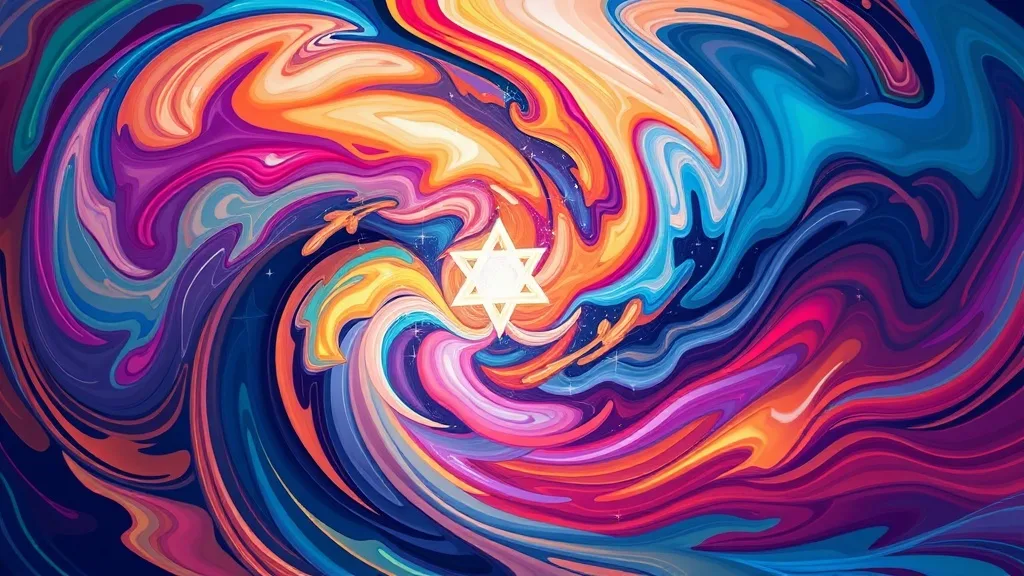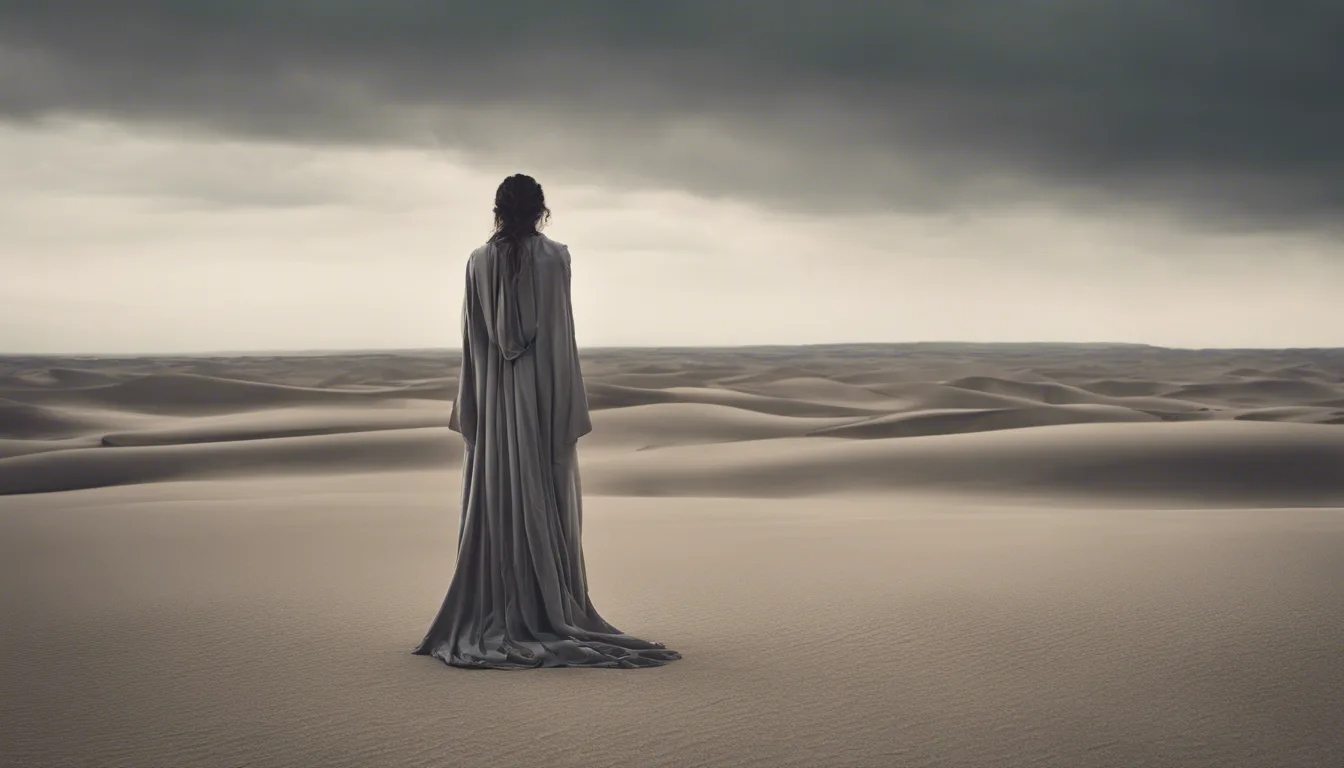10 Demographics of Individuals Prone to Dreaming of Selection Processes
Want a Personalized Dream Interpretation?
Curious about how people like you interpret this dream symbol? Explore personalized interpretations tailored to your demographic. Get personalized insights for free!
Get Free Interpretation Now →Table of Contents
1. Age
As we progress through different stages of life, our experiences, perspectives, and subconscious minds undergo significant changes. These transformations are often reflected in the symbolism of our dreams.
Childhood:
- Children's dreams are typically vivid, imaginative, and filled with fantastical elements.
- Symbols may represent their fears, wishes, and the exploration of their own identity.
- Common symbols include animals, toys, and family members.
Adolescence:
- As teens navigate the complexities of puberty and social change, their dream symbols become more complex.
- Sexual imagery, relationship problems, and self-expression often emerge.
- Common symbols include mirrors, mazes, and figures of authority.
Young Adulthood:
- Young adults' dreams focus on establishing independence, finding their place in the world, and forming romantic relationships.
- Symbols may represent career choices, financial concerns, and the search for meaning.
- Common symbols include bridges, maps, and symbols of success.
Middle Age:
- Midlife brings about a reassessment of life's purpose, relationships, and mortality.
- Dream symbols may reflect themes of regret, fulfillment, and the passing of time.
- Common symbols include clocks, mirrors, and water imagery.
Older Adulthood:
- Seniors' dreams often reflect a sense of completion, wisdom, and introspection.
- Symbols may relate to the past, legacy, and preparation for death.
- Common symbols include sunsets, family heirlooms, and the circle of life.
Understanding the symbolism of dreams across different age groups can provide valuable insights into the unique challenges and opportunities each stage of life presents.
2. Gender
Dreams often reveal our deepest thoughts and desires, and the symbols we experience within them can provide valuable insights into our psyche. The selection of these dream symbols is influenced by various factors, including our gender. Studies have shown that men and women exhibit distinct patterns in the types of symbols they experience in their dreams.
For instance, men are more likely to encounter symbols related to dominance, aggression, and control. These symbols may manifest as images of weapons, vehicles, or competitive sports. Conversely, women tend to dream of symbols associated with relationships, nurturance, and connection. They may experience images of children, flowers, or animals.
These gendered differences in dream symbolism are thought to reflect the socialization processes that shape our roles and expectations in society. Men are often encouraged to be assertive and independent, while women are taught to prioritize their relationships and emotional well-being. These societal influences can influence the symbols that emerge in our dreams.
However, it's important to note that these patterns are not set in stone. Both men and women can experience a wide range of dream symbols, regardless of their gender. The selection process is a complex and multifaceted one, influenced by our individual experiences, beliefs, and subconscious mind. By understanding the role of gender in dream symbolism, we can gain a deeper understanding of our own dreams and the psychological processes that shape them.
3. Occupation
Dreams often reflect our waking lives, including our occupations. The symbols we encounter in our dreams can provide insights into our work-related concerns, aspirations, and anxieties.
- Tools and equipment: Dreaming of the tools or equipment you use at work can symbolize your skills, competence, and confidence in your abilities.
- Workplace: The setting of your dreams can also reveal clues about your work environment. A chaotic or disorganized office might reflect stress or a lack of control, while a harmonious and efficient workplace could indicate a healthy work-life balance.
- Colleagues: The people you encounter in your dreams may represent your relationships with coworkers. Positive interactions can symbolize collaboration and support, while conflicts or tensions could reflect underlying workplace dynamics.
- Tasks: The tasks you perform in your dreams can offer insights into your work responsibilities. Completing them successfully may signify accomplishment and satisfaction, while struggling or failing could indicate challenges or frustrations at work.
- Challenges: Dreams featuring obstacles or challenges at work can highlight areas where you may feel overwhelmed or insecure. Overcoming these obstacles in your dreams can provide a sense of empowerment and resilience.
By analyzing the dream symbols specific to your occupation, you can gain a deeper understanding of your work-related experiences and identify areas for growth and improvement.
4. Education Level
Individuals with varying levels of education may approach the selection of dream symbols differently. Those with higher educational attainment often use more complex and abstract symbols, influenced by their exposure to diverse ideas and knowledge. They may draw from literary, historical, or cultural references, seeing dreams as a form of creative expression and reflection of their intellectual pursuits. Conversely, those with lower educational attainment may utilize more concrete and everyday symbols, grounded in their personal experiences and social contexts. Their dream symbols tend to be more straightforward and aligned with their immediate surroundings.
However, these generalizations are not absolute. Education level is just one factor that influences dream symbol selection, and individual experiences and psychological factors also play a significant role. Despite these variations, exploring the diverse symbolism associated with different demographic groups can provide valuable insights into the multifaceted nature of dreams and the human psyche.
5. Cultural Background
Cultural background plays a significant role in shaping the dream symbols we encounter. Beliefs, values, and traditions deeply influence how we interpret our dreams. For example, in cultures that emphasize ancestor veneration, it is common to dream of deceased relatives as symbols of guidance and protection. Similarly, in cultures where nature is highly valued, natural elements like trees and water often carry symbolic meanings related to growth, renewal, and healing.
Understanding the cultural context behind dream symbols can enrich our interpretations and provide insights into our subconscious minds. By considering the cultural influences on our dreams, we can gain a deeper understanding of ourselves and our connection to our heritage.
6. Religious Beliefs
For devout individuals, religious beliefs can significantly shape the selection of dream symbols. Dream content often mirrors the spiritual themes, values, and imagery ingrained in their religious practices and beliefs.
- Symbols of Faith: Dreams may feature objects, figures, or events that hold religious significance. For example, Christians might dream of a cross, Muslims of a crescent moon, or Hindus of a lotus flower.
- Sacred Texts and Figures: Dreams can draw inspiration from religious texts or personages. Characters, stories, and teachings from the Bible, Quran, or Hindu scriptures may appear in dreams and convey messages or guidance.
- Religious Rituals and Practices: Dreams can reflect the symbols and actions associated with religious rituals. Devotees might dream of participating in prayer, meditation, or ceremonies, indicating a connection to their spiritual practices.
7. Past Experiences
Our past experiences significantly influence the symbols that appear in our dreams. They provide a reservoir of images, emotions, and associations that our subconscious mind draws upon.
People who have experienced trauma, for example, may often dream of symbols related to their traumatic event. These symbols might include images of danger, violence, or helplessness. Such dreams help the dreamer process their emotions and come to terms with their past.
Conversely, people who have had positive experiences may dream of symbols that reflect their happiness and success. These symbols might include images of loved ones, nature, or achievements. These dreams provide a sense of comfort and reassurance, reminding the dreamer of their worth and potential.
By understanding the connection between our past experiences and dream symbols, we can gain valuable insights into our own psychology. Dreams can help us identify unresolved issues, explore hidden emotions, and make sense of our waking lives.
8. Current Life Circumstances
Our current life circumstances can significantly influence the symbols that appear in our dreams. For instance, individuals navigating significant life transitions, such as a career change, relocation, or relationship milestone, may encounter dreams centered around themes of exploration, uncertainty, and potential. Conversely, those coping with stress or anxiety might encounter dreams involving conflict, fear, or unresolved issues, as their subconscious attempts to process these emotions. Dreams can provide insight into our current emotional and mental state, helping us understand our reactions, motivations, and hidden fears or desires.
9. Mental and Emotional State
- Extreme Stress or Anxiety: Dreams may be vivid and intense, often featuring symbols of danger, threat, or persecution.
- Depression: Dreams tend to be more negative and pessimistic, with symbols of sadness, hopelessness, and failure.
- Trauma: Dreams can be highly emotional and fragmented, with symbols representing the traumatic event or its effects.
- Mania or Bipolar Disorder: Dreams may be rapid, disorganized, and filled with grand or unrealistic imagery.
- Schizophrenia: Dreams may exhibit bizarre and illogical content, with symbols representing hallucinations or delusions.
10. Personality Traits
Dreams are a fascinating and complex phenomenon that have intrigued people for centuries. While there is no single, definitive answer to the question of what dreams mean, there is a growing body of research that suggests that dreams may be a way for our brains to process information, solve problems, and regulate our emotions.

One of the most interesting aspects of dreams is the use of symbols. Dreams are often filled with images and objects that seem to represent something else, and these symbols can be a key to understanding the meaning of the dream.
The selection of dream symbols is a complex process that is influenced by a variety of factors, including our personality traits. For example, people who are high in openness to experience tend to have dreams that are more vivid and symbolic than people who are low in openness. People who are high in agreeableness tend to have dreams that are more positive and pleasant than people who are low in agreeableness. And people who are high in conscientiousness tend to have dreams that are more organized and goal-oriented than people who are low in conscientiousness.
The following are some specific examples of how personality traits can influence the selection of dream symbols:
- Openness to experience: People who are high in openness to experience are more likely to dream about new and unusual things, such as fantastical creatures, faraway lands, and abstract concepts.
- Agreeableness: People who are high in agreeableness are more likely to dream about positive and pleasant things, such as friends, family, and loved ones.
- Conscientiousness: People who are high in conscientiousness are more likely to dream about organized and goal-oriented things, such as work, school, and projects.
Of course, these are just a few general examples, and the specific symbols that appear in a dream will vary depending on the individual. However, the research on dream symbols suggests that our personality traits can play a significant role in the selection of these symbols.
Back to interpretation of selection process

